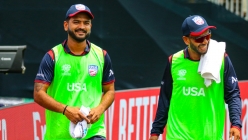A recipe for chaos
2009 Sep 07 by Suresh Menon
Batsmen (and bowlers) going through a revolving gate as teams go in and then come out and then repeating that process is a recipe for chaos.
Sachin Tendulkar is not the first person to talk of playing the one-day international in four quarters of 25 overs each (although if you listened to the noise on Indian television you might think that Sachin actually invented cricket – but that’s another matter altogether). Over a decade and a half ago, the television magnate, the late Mark Mascarenhas, then just beginning to get involved with Indian cricket and cricketers had suggested the same formula. He was concerned not so much with the aesthetics of the game as with the marketing possibilities in three breaks between innings rather than one.
Around the same time, there was similar talk in soccer too. The World Cup was to be held in the United States - now there’s a country that loves its quarters! Twenty two and a half minutes per quarter, more advertisements, better deal for those with weak bladders watching – the arguments looked beyond the sport.
Tendulkar’s argument is that such a rotation would eliminate the unfair advantage of the toss, and probably ensure that every match had a result. It would also overcome the ennui of the middle overs – when teams get into a holding pattern, the batting side intent on retaining wickets and the bowlers happy to merely save runs.
Any format that lacks a basic, natural complexity will ultimately collapse as options run out. It is happening to 50-over cricket now and, doubtless, will also happen to Twenty20 in time.
But artificial solutions will only make the game more confusing. You cannot play the 50-over game as a series of 25-over games and hope the spirit of Twenty20 will revive it. The survival of the sport depends on making the three formats distinct from one another. A Test match aspiring to be a 50-over contest or a Twenty20 aspiring to be a Test match is both confusing and unnecessary.
With England and South Africa erasing the 50-over game from their domestic circuit, it is now open season for giving this format artificial respiration. Have fours and eights (not sixes), says Dean Jones; remove the field restrictions on the leg side says Derek Pringle. Reduce it to 40-overs-a-side say some.
There is a touch of desperation about these suggestions. The periods of inactivity in the ODI have been brought into sharper focus by the advent of Twenty20. But there is no need for drastic changes to make it more convoluted. The choice is between scrapping it altogether or keeping it as it is. Anything else would be a compromise that would interfere with the nature of the game.
Television rights for the next two World Cups (50-over tournaments) have already been sold, so perhaps the International Cricket Council will need to look at the question only around 2015. Six years is long enough to decide whether the four-decade old format needs to be kept on.
In any case, the ICC cannot dictate what formats a country must concentrate on. If England, for example, win the 2011 World Cup (they haven’t won one so far), then there might be a magical revival of the format in that country. Supply and demand work on the sports field too – as the Indian market showed once again following India’s triumph in the Twenty20 World Cup. If the ODI dies a natural death, then so be it. But the changes to it should not disturb the basic nature of the competition.
Batsmen (and bowlers) going through a revolving gate as teams go in and then come out and then repeating that process is a recipe for chaos.




